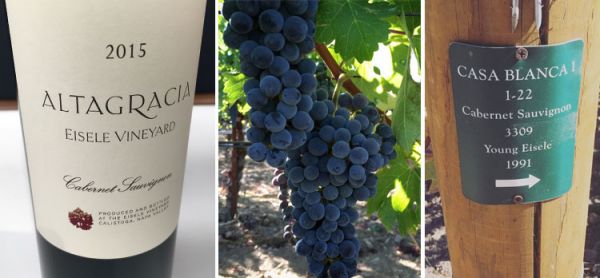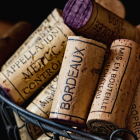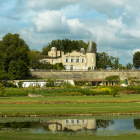I never thought I would say this but I have fallen for Californian Cabernet. Wine collectors Stateside have long appreciated the charms of Napa’s reds but European drinkers have remained on the continent for their Cabernet fix.
With its rich history and storied chateaux, Bordeaux certainly offers a romantic past and a long track record of age-worthy reds but the finest offerings from Napa have so-impressed the Bordelais that they have headed across the Atlantic to produce Bordeaux-style blends: Christian Moueix is the man behind Dominus, Chateau Margaux’s managing director Philippe Bascaules spends his time between the Medoc and Inglenook while Francois Pinault’s Groupe Artemis, the owner of Chateau Latour, bought Araujo Estate in 2013, which has since become Eisele Vineyard Estate.
First planted in the late nineteenth century with Zinfandel and Riesling, Cabernet Sauvignon vines at Eisele Vineyard were planted in 1964. The vineyard, named after owners Milton and Barbara Eisele, entered the history books in 1971 after Paul Draper of Ridge Vineyards guided the grapes to the glass, producing the first wine from the site. And what a wine it was: it is considered one of America’s legendary wines.
Its location is part of the magic: nestled in the northern reaches of Napa Valley, Eisele Vineyard enjoys a near-perfect location: the site is protected from extreme weather by the Palisades Mountains to the north and is cooled by westerly breezes that blow through the Chalk Hill Gap, producing a gentle climate to caress the mainly-Cabernet vines on its rocky soils.
Under new ownership in 1990, Bart and Daphne Araujo launched its next chapter, farming the estate using organic and biodynamic principles, a philosophy that new owners Groupe Artemis, continue to pursue today as custodians of the land.
The resulting wines are restrained and perfumed rather than wild and powerful, offering the precision of a fruit with multidimensional tannins. There is a certain naturalness to these wines: they are totally unforced. I remember tasting these wines in 2001 and 2002 and, from then on, I was convinced that Napa Valley had what it takes to make great Cabernet. It is a revelation I would like to share with you.

2015 Altagracia (88% Cabernet Sauvignon, 7% Cabernet Franc, 5% Petit Verdot)
This wine is made in the same way as the grand vin but is crafted from parcels situated in the eastern part of the Eisele Vineyard in conjunction with some fruit sourced from long-serving grape growers in other parts of the Napa Valley. It is a more approachable wine in its youth with bright aromatics reminiscent of ripe redcurrant and cassis with dried flowers and roasted herbs on the palate. It is soft yet compact with excellent depth. The finish is juicy and persistent. Released on Valentine’s Day 2018, it is a wine that is easy to love.
95-96 pts
2015 Eisele Vineyard (100% Cabernet Sauvignon)
A luxurious wine with huge depth and incredible purity of fruit: expect a richly aromatic wine of cassis, raspberries, earthy tones and cocoa powder. While this wine is matured in 100% new oak, it is harmonious, supporting the richly concentrated fruit with subtle clove and spices. The tannins are rich and savoury, complementing the layers of flavour. While dense and intense, there is a sense of freshness on the finish and there is no doubting that this is a wine that has the structure to age gracefully for decades.
98+ pts
These wines were tasted in April at a tasting conducted by sommelier extraordinaire Jan Konetzki, Chateau Latour and Artemis Ambassador as well as Director of Wine at Four Seasons at Ten Trinity Square, a private club close to the Tower of London, which houses the Chateau Latour Discovery Room






